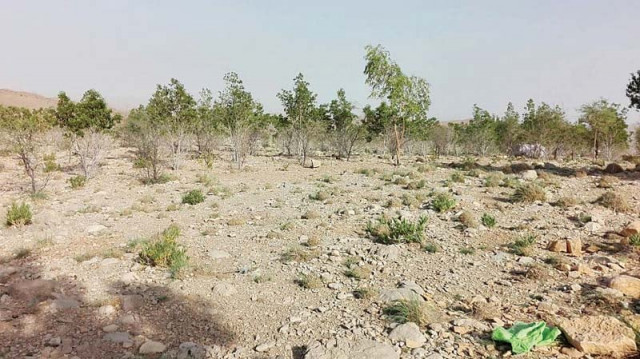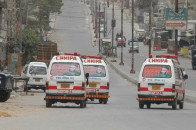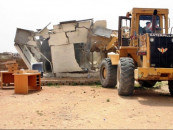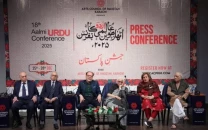Afforestation scheme at Gorakh Hills fails to bear fruit
Blame game continues between GHDA, forest department

A Rs100-million plantation scheme was launched in 2008 to make the Gorakh Hill green, but the plan only continued on paper. PHOTOS: EXPRESS
On the way to the hill station, the roadside plantation at Bozdarabad Point depicts a sorry picture as, except for a few dying trees, it is predominantly barren.
However, the area was supposed to be covered with lush greenery under the afforestation scheme of Gorakh Hill, for which the Sindh government 'spent' Rs100 million.

The scheme was launched soon after the Pakistan Peoples Party (PPP) government came to power in 2008 and aimed to carry out roadside plantation at the site, which is located at an elevation of around 6,000 feet. The plantation continued till 2012, but only on paper.
"Under the scheme, the government appointed a few gardeners and watchmen who just draw their salaries and don't come to work," said Rustam Rind, a driver who lives near the hill station, which is one of the highest plateaus of Sindh.
"Due to the lack of proper vigilance, some people took away the motors and other machinery installed for supplying water to these plants and trees," he added.
Who to blame?
Although the afforestation scheme was initiated by the Sindh forest and tourism department, officials of the department now shift the blame on the Gorakh Hill Development Authority (GHDA), which was formed in 2008.
"Under the new law, all matters pertain to the authority," said forest secretary Rizwan Memon when asked about the afforestation scheme. "It is better to ask these questions from the relevant GHDA officials."
When GHDA was formed, the chief minister was made its chairperson and culture and tourism minister was to serve as its vice-chairperson. However, the government amended this and the local MNA was then made its chairperson.
On the other hand, the newly-appointed GHDA director-general (DG) Nazir Jamali claimed that the forest department is responsible for the afforestation scheme and GHDA has nothing to do with it.
Officials in the Sindh government informed that the National Accountability Bureau and Anti-Corruption Establishment had started separate inquiries into how the funds were embezzled. Nevertheless, the findings of the inquiries have yet to be made public or acted upon.

Besides the afforestation project, the government had also planned to cover the dry mountains with greenery using aerial seeding but that, too, never saw the light of the day.
Future development
Talking about the hurdles in the way of developing the hill station, Jamali said that allocation of a meagre budget is the actual problem.
"What development do you expect if Gorakh gets Rs50 million in a span of 12 years?" he remarked, adding that the authority has now received Rs2 billion with the efforts of its new chairperson, MNA Rafique Jamali.
Sharing future plans, he said that Rs50 million have been allocated to secure the vulnerable points on the roads leading to Gorakh Hill. "Further, a PC-1 is being developed to construct a double carriage and a smooth road," he said, adding that they have provided electricity and water at the hill station and also constructed a few guesthouses. "More guest houses are being built and you will see the change in a year," he added.
Untapped potential
"The 54-kilometre road leading from Wahi Pandhi to Gorakh Hill is completely dilapidated and visiting Gorakh is quiet an adventure," said a tourist, Israr Pirzada, adding that if a proper road is built, people from Karachi, Hyderabad and other cities and towns of Sindh will stop travelling to the northern areas of the country and instead visit the hill station.
"This is third time I am visiting this place with my family," said another tourist, Ahmed Faraz, who belonged to Karachi. "Unfortunately, this wonderful tourist spot is not on the priority list of our government."
Published in The Express Tribune, September 16th, 2016.



















COMMENTS
Comments are moderated and generally will be posted if they are on-topic and not abusive.
For more information, please see our Comments FAQ